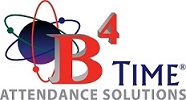Long-Term Care Scheduling: How To Manage Facilities When They Never Close

Long-term care facilities present unique challenges when it comes to employee scheduling. Government and industry employee regulation aside, they run a 24/7 operation that simply cannot close.
That’s not saying that there aren’t other 24/7 industries out there; take manufacturing, for example. However, in manufacturing an employee can simply turn a machine off and take their break or lunch. In long-term care, this is not an option. The focus is people who need constant care, regardless of who needs a lunch break.
Long-term care facility staff requirements change based on the time of the day. Mornings are different than evenings, and failing to properly address that will result in either a decline in patient care or business longevity. It’s important to know when to schedule employees, and which qualified employees to schedule at all times of the day – every single day of the year.
Know What You Need Before You Need It
Creating schedules for a long-term care facility can be a burden. Considering shifts that encompass a 24-hour schedule, managers must fill slots with properly qualified candidates. Different shifts require different numbers of employees. For example, you can typically reduce staff during overnight hours as opposed to daytime.
Using a workforce management system that incorporates visual scheduling can lessen the time spent on creating schedules. Using historical data as a reference point, visual scheduling creates custom future schedules ready for potential editing, and reports for data citation. This is a huge leap – starting from scratch in creating schedules, and you can’t deny the trickle-down effect. Job satisfaction enhances when scheduling feels smart and solid. Patients receive better care when the correct number of qualified staff is onsite. Burnout deceases when employees are set up for success.
Get Employees Involved
There’s a new sheriff in town, and he’s called the Schedules That Work Act. This act, created by Congress and enforced locally, directs employers to provide increased notice of schedule changes and gets employees involved in their own scheduling. Timeframes and start dates vary by state, but everyone should be aware of the guidelines.
Implementing technology that employees can use to not only view their schedules but also make adjustments is a game changer. Employees are empowered when they can drop, swap, and pick up available shifts on the fly. Visual, enhanced scheduling software enables this through a customized set of rules so that properly qualified personnel see available shifts. Managers can make the final approvals needed and business goes on as usual.
Peripheral Benefits
Visual scheduling software that incorporates mobile technology bridges a huge communication gap between management and their staff. Employees that can instantly send a message requesting vacation time, taking a sick day, or even picking up a shift are naturally encouraged to take initiative with their schedule. When managers have the ability to quickly respond, employees feel heard and connected to their job in ways the past couldn’t fulfill.
Another benefit to visual scheduling is the reduction of labor costs. Labor costs are an enormous burden on the bottom line of long term care, and managers must make it their job to schedule accurately and smart. Reducing overtime is a huge element when it comes to keeping labor costs at bay. Visual scheduling keeps track of which employees are approaching overtime, and reaches out to those not approaching overtime first as candidates for open shifts.
There is a lot at stake in long-term care scheduling. A smart schedule directly affects quality patient care, employee job satisfaction, and controlled labor costs. Considering the 24/7 scheduling needed for long-term care facilities, it’s a crucial part of the business that demands priority.
Visual Scheduling is that thing you didn’t know you couldn’t live without. Using historical data, combined with custom settings, visual scheduling provides graphs, charts, and other visual cues to assist in scheduling not only enough people but the right people. And that’s a schedule for success.
Attendance on Demand’s WorkSync solution incorporates these scheduling and employee engagement elements and more. We’re here to answer questions and provide additional information. Contact us today.
